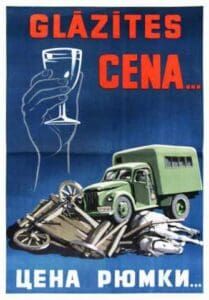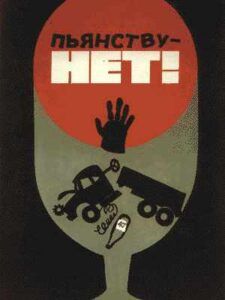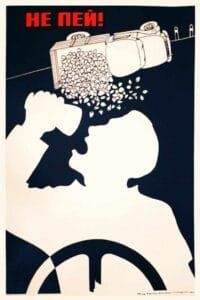Your Hump-day Recess: More Soviet Anti Drunk Driving Posters

Russia’s relationship to alcohol is a curious one.
The government instituted prohibition in 1914, yet alcoholism remained rampant.
Eventually the state took over production of alcohol, even as it promoted temperance.
It wasn’t until Khruschchev that a real struggle against alcohol and drunk driving began in the late 1950s, with limited success. Then Mikhail Gorbachev made the issue of alcoholism the government’s first priority.

In addition to restricting the amount of alcohol sold and the times and places it could be consumed, the Soviet government used one of its favorite media – the propaganda poster – to get across the idea that drinking and driving were harming society, commerce, and the country in general.
Alas, the campaign was a bust. In fact, one of its unexpected effects was a serious shortage of sugar, since illicit home distillers needed it to make moonshine. Drinking continued, and so did drunk driving.

The standard approaches to the offense – license suspension, jail, and fines – do not work well, since drinking is so entrenched in the culture. Perhaps it’s time to introduce the ignition interlock to Russia and the other former Soviet republics.
What remains of Gorbachev’s good intentions are the posters, fine examples of Soviet graphic design that were asked to do a job that no poster could do on its own.
